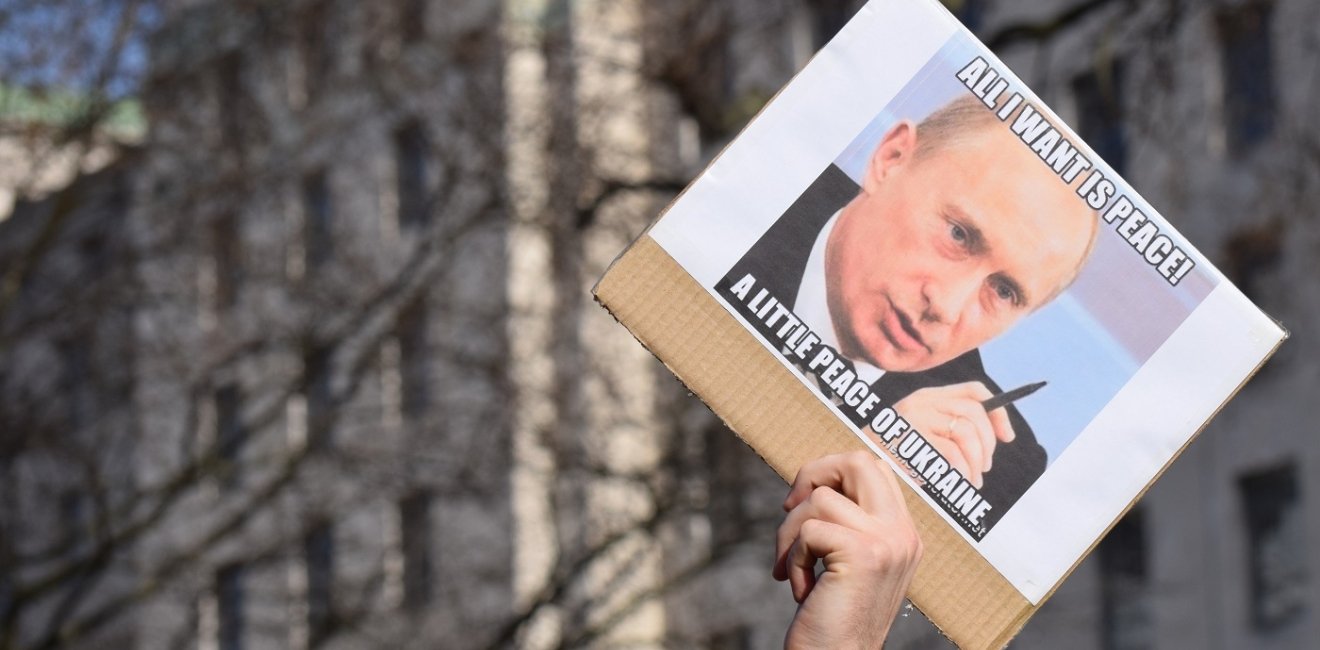
A blog of the Kennan Institute
February 24 is the anniversary of the start of Russia’s war of aggression against Ukraine—a war on a scale Europe has not seen since World War II. Ballistic missile strikes, aircraft, tank wedges, MLRS, trenches, front lines—all of this humanity has been trying to avoid for over seventy years. However, on the morning of February 24, 2022, Putin metaphorically bombed all of Europe’s “never again” places, and a month later we got the devastation and massacres at Bucha and Izium, which became symbols of modern European tragedy.
After a year of brave Ukrainian resistance, the question arises: What was Putin’s real goal? What were his real ends in starting one of the bloodiest conflicts in Europe? After all, sober-minded people cannot assume that Putin himself believes in the propaganda he feeds to Russians. He knows perfectly well that there are no Nazis in Kyiv and that Ukraine has not planned any military actions against Russian proxies and forces in the non-government-controlled areas in the Donbas. Looking back, it seems clear that 2022 was a year of constant change in Putin’s goals and plans, from preventing NATO expansion to defending a corridor to Crimea.
Putin’s Evolving Objectives
On December 15, 2021, Putin sent demands to NATO to return to the 1997 borders and to deny the accession of Ukraine and Georgia. These demands were supposedly to deter Russia, which at the time felt threatened by NATO enlargement on its borders, from going to war to achieve its security interests. Putin did not demand that NATO “denazify the Kyiv regime” or “demilitarize Ukraine,” although he has publicly described the West as Kyiv’s puppeteer. So, before the start of the war, Putin's main concern was to resolve relations with the West, not Ukraine.
Having seen his request refused, Putin announced new goals: demilitarization, denazification, and “liberation” of the territories of Luhansk and Donetsk oblasts. On February 24, 2022, Russian forces invaded Ukraine from seven directions. The strong resistance of Ukrainians led to enormous losses for the Russian army and its withdrawal from Kyiv. The defeat of Russian forces in the battles of Kyiv and Kharkiv put an end to talk of “denazification” and “demilitarization.”
Putin then had to define new goals in the war, though he began to avoid publicly stating them. The decision to annex the seized territories and Putin’s repeated demands for negotiations show that the new goals are to hold on to the seized territories. This is what the Russians were doing at the end of the first year of the war. In the end, they even had to retreat from Kherson without a fight, and troops from there had to reinforce the new front line.
However, as the mobilization and recruitment of prisoners to the Wagner Private Military Company took place, Putin seems to have decided to recapture the Donetsk region. Holding on to the captured southern regions of Ukraine and attempting to capture the entire Donbas region remain the main goals of the Russian aggression against Ukraine today. Undoubtedly, Putin has not abandoned his aggressive plans, but his realistic goals in the war today seem to focus exclusively on certain regions.
Thus the war that began as an intention to stop NATO expansion and seize control of Ukraine is now being fought over a few regions that have no strategic value for Russia except as a land corridor to Crimea. Putin has lost hundreds of thousands of soldiers, made Russia the most sanctioned country in the world, seen NATO expansion with the likely accession of Sweden and Finland, and all this to conquer a few regions of Ukraine? Was this really worth starting a large-scale war for?
In the year after launching the war, Putin has changed the goals of his aggression several times. Most probably he will keep changing those goals, depending on his luck at the front. The bravery of Ukrainians and the solidarity of the West have forced him to shrink his initial, outsized goals. But there can be no doubt: if Russian forces achieve some military successes, the Putin’s megalomania will return, and the war’s goals will be reviewed again. Therefore, it is incumbent on the West to do its best to make Putin fail and leave him with a single goal: getting out of Ukraine.
The opinions expressed in this article are those solely of the author and do not reflect the views of the Kennan Institute.
Author


Kennan Institute
The Kennan Institute is the premier US center for advanced research on Eurasia and the oldest and largest regional program at the Woodrow Wilson International Center for Scholars. The Kennan Institute is committed to improving American understanding of Russia, Ukraine, Central Asia, the South Caucasus, and the surrounding region through research and exchange. Read more

Explore More in Focus Ukraine
Browse Focus Ukraine
Talking to the Dead to Heal the Living

Ukrainian Issue in Polish Elections


